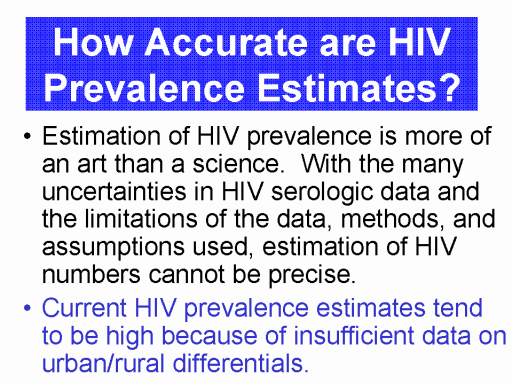As a result of all of the uncertainty inherent in the
available HIV data and the limitations of the methods used for
estimating HIV prevalence, for countries with an estimated low HIV
prevalence rate (< 0.1% of the adult population)), the actual
prevalence can be up to several times higher or lower.
For countries with a moderate HIV prevalence estimate (> 0.1
and < 1%), the actual prevalence can vary from 1-2 folds higher or
lower, and for high estimated HIV prevalence countries (> 1%), their
actual prevalence can be double or half of the estimated prevalence.
With such wide variance in HIV prevalence estimates, it is
unrealistic to attempt estimation of the annual number (i.e.,
incidence) of new HIV infections for any population or for the
world. Nevertheless, such
“official” estimates of marked increases
in annual HIV incidence continue to be widely disseminated by UNAIDS
and most AIDS
programs.
